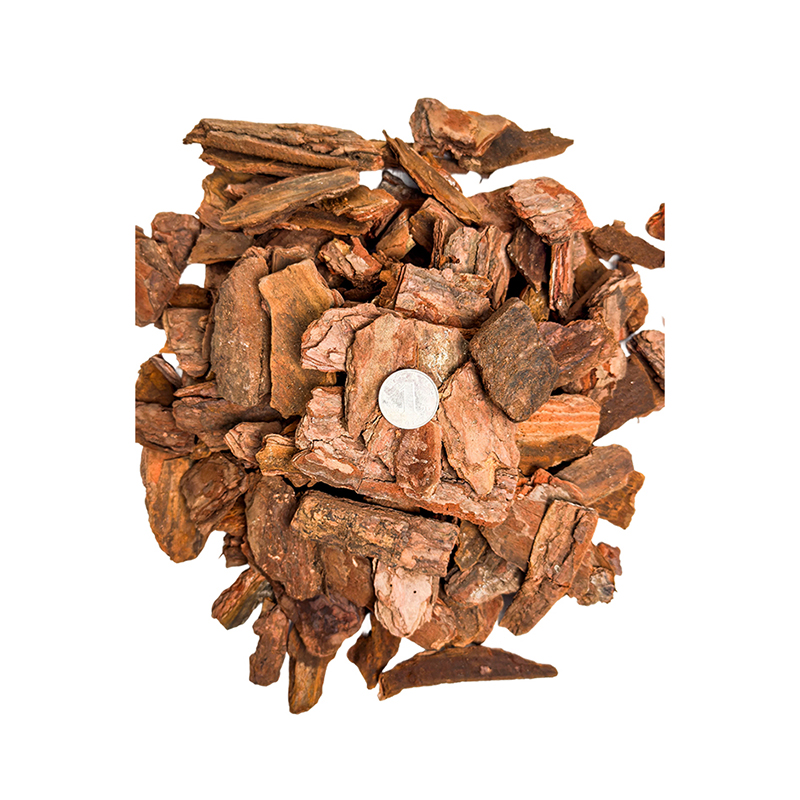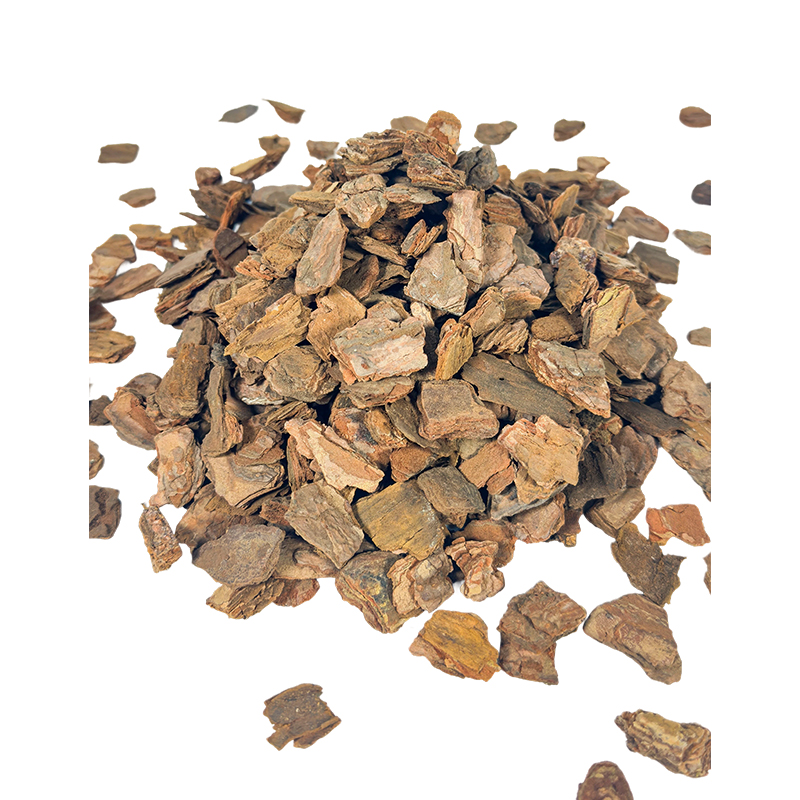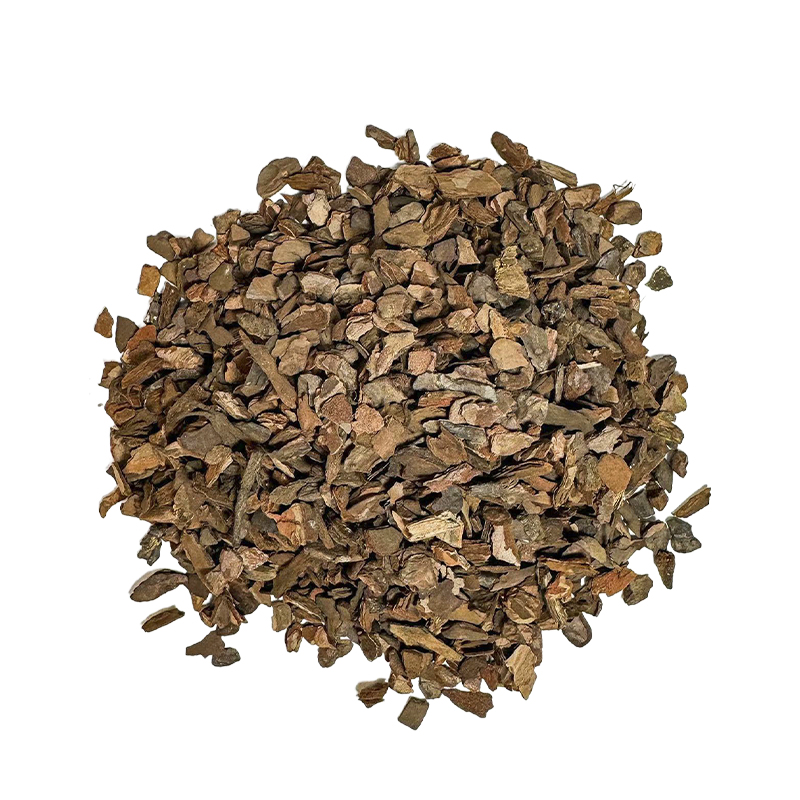What changes occur in the microbial community during pine bark fermentation?
Release Time : 2025-10-27
The pine bark fermentation process exemplifies the dynamic succession of microbial communities, with its dynamic patterns closely related to microbial metabolic activity, environmental conditions, and substrate characteristics. In the initial fermentation phase, the microorganisms attached to the pine bark surface are primarily bacteria and filamentous fungi. Bacteria are mostly aerobic and can rapidly utilize readily degradable substances in the pine bark, such as soluble sugars and amino acids, for reproduction. Filamentous fungi, through the secretion of enzymes such as cellulases and hemicellulases, degrade lignin and cellulose in the pine bark, providing a usable carbon source for subsequent microorganisms. During this phase, the microbial community structure is relatively simple, but metabolic activity is high, leading to elevated fermentation system temperatures and creating an environment favorable for the growth of thermophilic microorganisms.
As fermentation progresses, the dominant bacterial communities in the initial phase are gradually replaced by yeasts and actinomycetes. Under anaerobic or microaerobic conditions, yeasts ferment sugars into metabolites such as ethanol and organic acids. These products further regulate the pH and redox potential of the fermentation system, creating conditions favorable for the growth of actinomycetes. Actinomycetes possess a robust capacity for synthesizing secondary metabolites. They secrete substances such as antibiotics and enzyme inhibitors, inhibiting the growth of other microorganisms, thus becoming dominant in the mid-stage of fermentation. During this period, the microbial community structure becomes more complex, the variety of metabolites increases, and the physicochemical properties of the fermentation system undergo significant changes.
In the late stages of fermentation, readily degradable substances in the pine bark are largely consumed, leaving recalcitrant lignin and cellulose as the primary substrates. During this stage, microorganisms that secrete efficient lignin-degrading enzymes, such as certain white-rot fungi and bacteria, gradually become dominant. These microorganisms produce enzymes such as peroxidases and laccases, which break down the aromatic ring structure of lignin and degrade it into small molecules. Simultaneously, the microbial community in the fermentation system begins to form stable symbiotic relationships. For example, bacteria and fungi achieve mutually beneficial symbiosis through the exchange of metabolites. This relationship helps maintain microbial community diversity and promotes the sustained degradation of recalcitrant substances.
Changes in the microbial community are also significantly influenced by the fermentation environment. Temperature is a key factor in regulating microbial metabolic activity. During the thermophilic phase, the high temperature selects heat-resistant microorganisms, which adapt to the high temperature by synthesizing thermostable enzymes. During the cooling phase, mesophilic microorganisms gradually become the dominant population. Changes in pH are also crucial. Initially, organic acids produced by microbial metabolism cause the pH to drop, inhibiting the growth of some microorganisms. Later, as ammonia nitrogen accumulates, the pH rises, creating a favorable environment for alkaliphilic microorganisms. Furthermore, conditions such as the moisture content and aeration of the fermentation system indirectly regulate the direction of microbial community succession by affecting oxygen supply and substrate diffusion.
From a functional perspective, changes in the microbial community during fermentation are closely related to the degradation efficiency of pine bark. Initially, the process focuses on rapid degradation of readily usable substances. In the middle phase, the process regulates environmental conditions through the accumulation of metabolites. In the later phase, the process focuses on the conversion of recalcitrant substances. This staged degradation pattern allows the organic matter in the pine bark to be gradually released, ultimately transforming it into stable organic matter such as humus. Furthermore, changes in the microbial community are accompanied by dynamic adjustments in enzyme activity. For example, cellulase activity peaks in the middle phase of fermentation, while lignin peroxidase activity significantly increases in the later stages.
Changes in the microbial community have a decisive influence on the composition and properties of fermentation products. Organic acids and alcohols produced in the early stages impart distinctive aroma and flavor to fermentation products. Bioactive substances such as antibiotics and enzymes synthesized in the middle stages impart antibacterial and antioxidant properties to fermentation products. Humus formed in the later stages is rich in active groups such as carboxyl and phenolic hydroxyl groups, which can improve soil structure and enhance its water and fertilizer retention capacity. Therefore, by regulating the evolution of microbial communities, the functional properties of fermentation products can be targeted and optimized.
Changes in the microbial community during pine bark fermentation are the result of a combination of microbial metabolic activity, environmental conditions, and substrate characteristics. These changes not only promote the degradation and transformation of pine bark but also impart unique functional properties to the fermentation products, providing a scientific basis for resource utilization.







